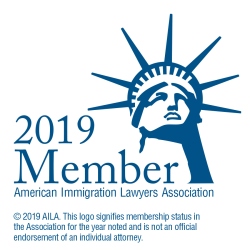Currently across the world, the number of people being displaced from their homes due to violence and other problems has increased greatly. Many of these people are fleeing to other countries seeking to escape from threats to their lives. The United States has received many asylum seekers in recent years. However, we lack the resources to deal with the high volume of refugees, which has created an enormous backlog at the United States Citizenship and Immigration Services (USCIS) Asylum Division and within the immigration courts.
A refugee or asylee is legally defined to be a person unable or unwilling to return to their country of origin because of persecution or a well-founded fear of persecution on account of race, religion, nationality, political opinion, or membership in a particular social group.
Human Rights First, a non-profit organization which helps coordinate legal representation to refugees in partnership with pro-bono attorneys, has published a report concerning the state of the immigration courts and USCIS in regards to these asylum cases, which make up approximately 20% of cases in the immigration courts. They found that at present, over 620,000 removal and asylum cases are pending in the immigration courts. Additionally, asylum seekers typically wait between three and six years for a resolution of their asylum claim – an exceedingly long time and which often detrimentally affects these potential asylees.
The systemic delays in both USCIS and the immigration courts have created a backlog; the number of cases that are backlogged at the Asylum Division at USCIS has more than quadrupled since 2013. That is, in 2013, there were 32,560 cases pending; that number has increased to 144,500 by March, 2016. This backlog is growing at a rate of approximately 20,000 cases every three months, and if nothing changes, USCIS is estimated to have over 200,000 pending cases by the end of 2016.
The delays are largely caused by an increase in credible and reasonable fear interviews, which are given to potential asylum applicants upon arrival at a US port of entry. In credible fear interviews (CFI), the USCIS officer determines if there is a “significant possibility” that the petitioner can establish an asylum or withholding of removal claim before a judge. In a reasonable fear interview (RFI), the officer determines whether there is a “reasonable possibility” of future persecution based on one of the five protected grounds under the refugee definition – the number of CFIs and RFIs have increased nine fold and seven fold, respectively, since 2009.
The average wait time for an initial asylum interview exceeds two years. Of the eight USCIS offices handling these cases, six are now scheduling interviews for applications filed over two years ago. This wait time is incredibly far behind the statutory requirement, which requires USCIS to conduct an initial interview within 45 days and have a complete initial adjudication within 180 days of the case being received.
Besides the CFIs and RFIs, another reason why the Asylum Division is so backlogged is because it lacks funding to hire a sufficient number of asylum officers necessary to adjudicate the cases in a timely manner. In order to completely eliminate the backlog, USCIS needs to increase its staff to 700 or 800 officers from its current size of 447.
The immigration courts also have a huge load of backlogged cases. In early 2016, the number of backlogged cases reached 480,815. If more judges are not hired, the backlog is predicted to reach 500,000 cases by the end of the 2016 fiscal year, and 1,000,000 cases by fiscal year 2022. The court is severely understaffed with a mere 254 judges, when 524 are needed to handle the large caseload. Because of this issue, delays can cause potential asylees to wait over six years in total for their cases to be adjudicated. It can take over two years for the initial interview with the USCIS Asylum Division. If USCIS denies the case, it then refers it to immigration court, where it can take more than another three and a half years, at best, to have the case heard. The problem feeds on itself, as many judges have retired due to the deteriorating working conditions, while not enough judges are being hired to cover this loss.
While these two divisions remain underfunded and understaffed, Congress has disproportionately increased the budget for immigration enforcement – the budget for enforcement agencies, such as Customs and Border Protection (CBP) and the Immigration and Customs Enforcement (ICE), has more than quadrupled, increasing from $4.5 billion in 2002 to $20.1 billion in 2016, whereas funding for the immigration court increased by a mere 74%. This has also contributed to the backlog – the US now has a greater capacity for apprehending and prosecuting immigrants, but this creates cases and without a proportionately increased budget for the systems handling these cases, the number of pending cases has skyrocketed.
At present, the number of people seeking asylum is at an all-time high. The chronic underfunding of USCIS and the immigration courts has caused the backlog to grow since 2008. Many refugees are fleeing from violence in Guatemala, Honduras, and El Salvador, and the volume of unaccompanied children and families has increased dramatically recently. This has exacerbated the backlog, as these refugees’ cases are given priority over other asylum seekers. While these cases are, in large part, meritorious (that is, approximately 90% of Central American asylum seekers who are lucky enough to be represented by an attorney are eventually granted asylum), the priority given to them has resulted in tens of thousands of cases being rescheduled for as late as November, 2019.
The impact these backlogs cause on the refugees can be highly detrimental. While potential asylees wait to be approved, their family members remain separated and in danger. Their families often are in hiding and face persecution, sometimes as a direct result of their loved one petitioning for asylum in the US. Furthermore, the long wait can harm the refugee’s mental health. The constant fear of not knowing what will happen, whether they will receive asylum, and their concerns about their family members’ safety, impedes many asylum seekers from being able to fully recover from their past trauma. Oftentimes, they struggle with worsened symptoms or develop new symptoms such as heightened stress and depression. In addition, many seekers have difficulties supporting themselves since they are not authorized to work for many months after first filing their asylum claims. They are also often unable to pursue an education since it is expensive – most forms of financial aid are not available to asylum seekers.
The long wait additionally has a negative impact on pro-bono legal representation. Almost 75% of pro-bono coordinators have said that the delays in the immigration courts play a significant role in their ability to take on a pro-bono case. However, access to legal representation is a substantial factor for the petitioning refugee, and can make the difference between deportation or relief.
Human Rights First proposed a few steps that could be taken in order to adjudicate these cases in a timely and fair manner, the main one being to increase funding for the Asylum Division at USCIS and the immigration courts.
In summary, if nothing changes from our current situation, the number of asylum cases will continue to exponentially increase and place stress on our resources. USCIS and the immigration courts will continue to be overly burdened and asylum seekers will have to wait for even longer periods to get their cases settled, which will harm their relationships and mental health. As Human Rights First explains, we are in a state of crisis, and this poor and unfair treatment of refugees needs to be rectified quickly.
All information in this post was obtained and summarized from the report published by Human Rights First. If you are interested in learning more about the backlogs in the USCIS Asylum Division and the immigration courts, please follow the link below to access the full report:
http://www.humanrightsfirst.org/sites/default/files/HRF-In-The-Balance.pdf



